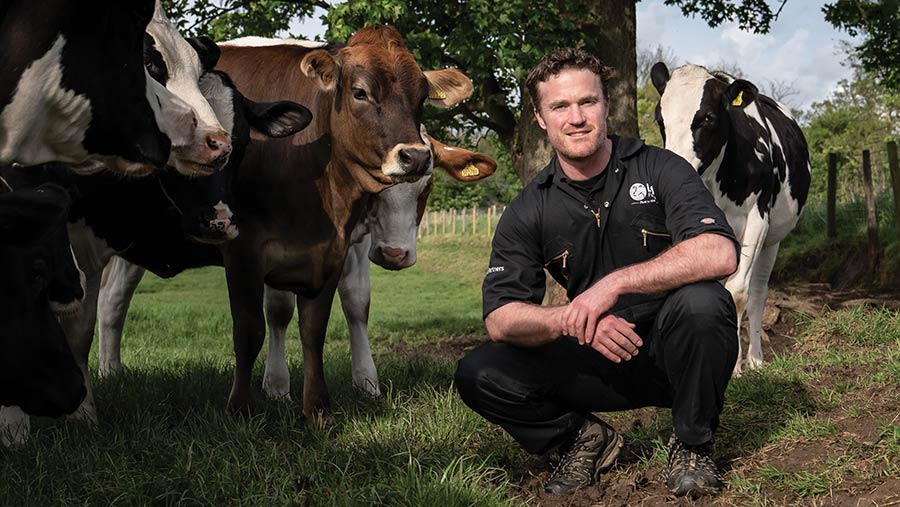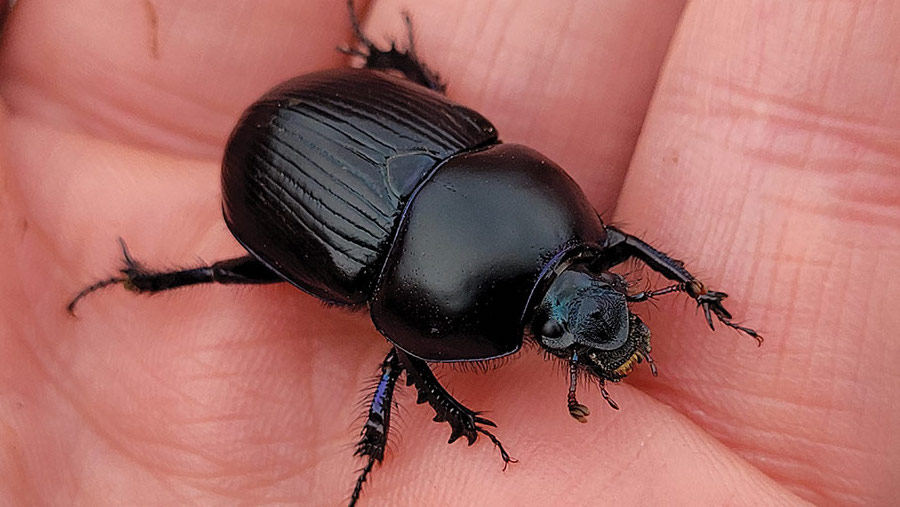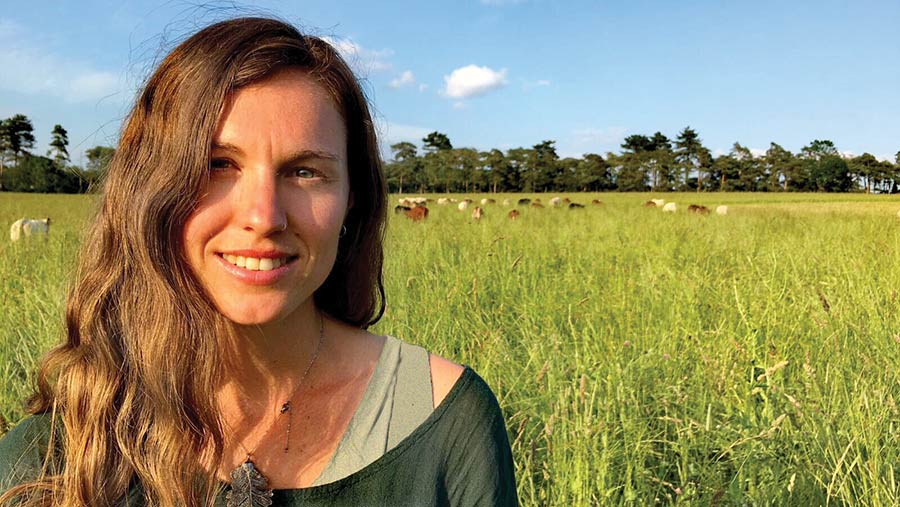Why you should stop blanket cattle worming and how to do it
 Rob Howe of LLM Vets © Victoria Middleton Photography
Rob Howe of LLM Vets © Victoria Middleton Photography Many cattle farmers are still taking a blanket approach to using wormers, which could render them useless while damaging the fragile ecosystem that makes livestock farming viable.
This is the finding of vet and Nuffield scholar Rob Howe of LLM Farm Vets. He carried out a farm study that showed most farmers used wormers prophylactically or in “a blanket fashion”.
Many were also using long-acting, seasonal control options, such as boluses. Most had been adhering to the same strategy for more than a decade.
See also: How a Cheshire dairy is calving heifers at 23 months
The study, which is ongoing, started in 2018 and, to date, about 30 cattle farms in Lancashire have enrolled.
This common approach to wormer use not only costs more but potentially reduces animal resilience, as cattle are less able to build natural immunity.
It also increases the likelihood of wormer resistance, particularly to Group 3 Ivermectin anthelmintics.
Impact on dung beetles
Overuse of wormers is also affecting soil and dung pat biology. Rob says dung beetles, which are essential to pasture health and productivity, are feeling the impact.
He says: “Ivermectin passes through the cow virtually unchanged.
“Once in the dung, there’s a lot of scientific evidence that shows it can kill or reduce the reproductive success of our critically important dung beetle populations, as well as other dung decomposers.”

© The Dung Beetle Trust
Rob, who is a board member of the British Cattle Veterinary Association, believes a non-chemical approach, focusing on responsible use of wormers in a similar fashion to antibiotics use, is needed.
“The good news is there’s so much low-hanging fruit in this area compared with antibiotics,” he says.
“We found a 90% reduction [in wormer use] is achievable.” In fact, most farmers in the trial managed to remove the need for wormers during the grazing season.
Integrated plan
Rob suggests farmers work with their vet or Registered Animal Medicines Advisor to create a farm-specific, integrated parasite management plan. This focuses on the following areas:
1. Vaccination for lungworm
Speak to your vet about whether lungworm vaccination is appropriate for your farm.
This can be the foundation for removing the need for chemical control, because unlike gut worm, lungworm is not easy to monitor or predict using muck tests and can be deadly.
2. Monthly faecal egg samples
Take pooled faecal egg count (FEC) samples from each grazing group and field, every month, starting three or four weeks after turnout.
This allows you to establish the gut worm burden in youngstock and get an idea of pasture burdens, so fields can be managed accordingly. For example, if FECs are high in one field, avoid grazing first-season calves in that area.
Pooled samples are an average and will mask high readings, so it may be necessary to individually sample animals that show signs of infection.
3. Targeted treatment decisions
The Control of Worms Sustainably (Cows) group advises against treating every animal in a group, as this encourages wormer resistance.
Instead, treatments can be targeted based on FECs or animal performance. For example, when a group has a high FEC, treatments can be targeted towards those animals below a target daily liveweight gain.
Stockmanship observations (for example, dirty rear ends) should always be used.
4. Pasture management
- Avoid grazing the same pasture every year with youngstock.
- Start grazing youngstock on clean pasture and rotationally graze so ground has a chance to rest (see “Grazing strategy and pests, parasites and dung beetles”).
- Silage aftermaths and leader-follower approaches, where older, more resilient cattle follow younger, less resilient animals, can be employed to reduce risks.
- Mob-grazing – where there is a longer break between grazings – can in theory break the parasite lifecycle and provide a dilution effect.
- Grazing plants with high levels of tannins, such as herbal leys, can reduce parasite burdens.
Case study: Neil Kidd, Booth Hall, Lancaster
Farm Facts: Booth Hall, Lancaster
- Family partnership between Neil Kidd, his parents, Fred and Maureen, and brother, David
- 121ha (300 acres)
- 160 Holsteins in milk
- Grass-based system with some maize bought in
- 10,000 litres a cow a year at 4.1% fat and 3.4% protein
- All-year-round-calving
Wormers are a thing of the past at Booth Hall near Lancaster, where an alternative vaccination and monitoring strategy has resulted in improved cattle growth rates, money savings and reduced stress.
About four years ago, the Kidd family routinely applied pour-on wormers every month when youngstock were turned out.
Neil Kidd says discussions with vet Rob Howe of LLM highlighted the potential to overhaul parasite management and only worm if and when necessary.
Vaccinating for lungworm would also boost cattle’s immunity and reduce potential growth checks from exposure.
Routine worming was replaced with monthly faecal egg counts (FECs) at pasture to establish the worm burden and the need to treat.
Neil admits to being “shocked” that worm counts have been consistently low enough not to warrant any treatment, with results commonly finding no eggs in a sample.
Lungworm vaccine
He now only vaccinates for lungworm. “We’ve turned it completely on its head, and don’t use the pour-ons at all. We’ve seen improvements in growth, especially in younger cattle,” he says.
This has been reflected in a three- to four-month reduction in age at first calving, to 22-23 months. Neil says this has been a bigger financial benefit than the saving in wormer costs.
Faecal samples can also be taken when stock are routinely checked. This is less hassle than gathering cattle for treatment, he says.
Pasture is no longer grazed by sheep, meaning cattle graze higher swards, which lowers fluke contamination risk.
The milking cows are also not treated for fluke, which removes milk withdrawal concerns.
Neil says the new approach has been hugely beneficial. “It’s definitely a lot better: less stressful, better growth rates and more money in our pockets at the end of the day.”
Grazing strategy and pests, parasites and dung beetles

Dr Bryony Sands © Amanda Sands
Rotational grazing has a similar impact on worm egg counts as using anthelmintics, without negatively affecting beneficial pasture insects, according to new research.
Dr Bryony Sands, a postdoctoral fellow at the University of Vermont, looked at the impact of grazing strategy on worm egg counts and the pasture ecosystem on 30 dairy farms in the US states of Vermont and New York.
Farms set-stocked, with or without anthelmintics, or rotationally grazed, with or without anthelmintics.
“Rotational grazing reduced worm egg counts down to a level comparable to the farms that were using veterinary parasiticide treatments,” Bryony explains.
The as-yet-unpublished work also found:
- Farms using parasiticides had significantly reduced beneficial insects, including dung beetles
- Farms that rotationally grazed had higher active soil carbon and lower compaction
- The more dung beetles, the higher soil organic matter and the fewer pests and parasites.
